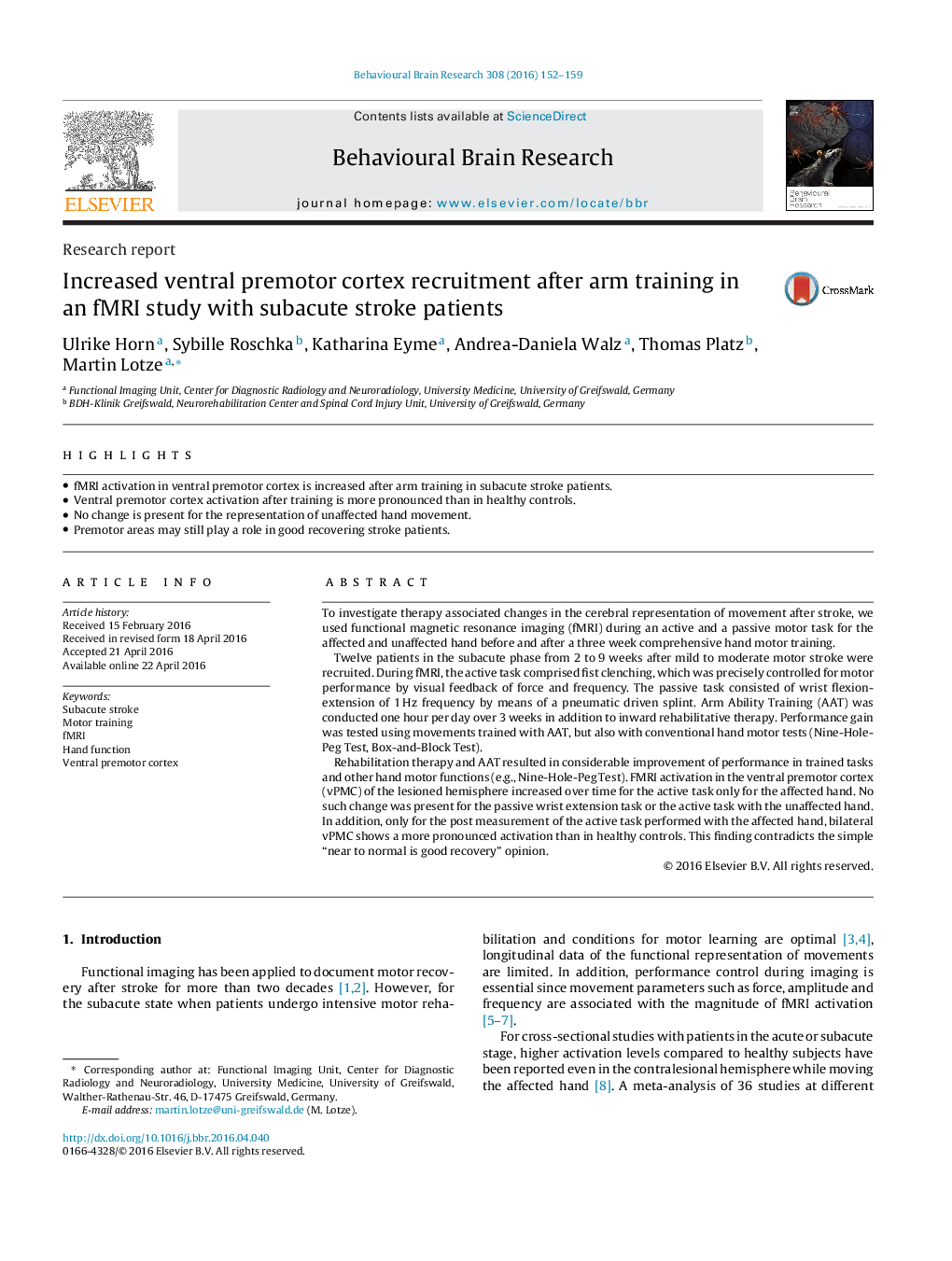| کد مقاله | کد نشریه | سال انتشار | مقاله انگلیسی | نسخه تمام متن |
|---|---|---|---|---|
| 6256027 | 1612925 | 2016 | 8 صفحه PDF | دانلود رایگان |

- fMRI activation in ventral premotor cortex is increased after arm training in subacute stroke patients.
- Ventral premotor cortex activation after training is more pronounced than in healthy controls.
- No change is present for the representation of unaffected hand movement.
- Premotor areas may still play a role in good recovering stroke patients.
To investigate therapy associated changes in the cerebral representation of movement after stroke, we used functional magnetic resonance imaging (fMRI) during an active and a passive motor task for the affected and unaffected hand before and after a three week comprehensive hand motor training.Twelve patients in the subacute phase from 2 to 9 weeks after mild to moderate motor stroke were recruited. During fMRI, the active task comprised fist clenching, which was precisely controlled for motor performance by visual feedback of force and frequency. The passive task consisted of wrist flexion-extension of 1Â Hz frequency by means of a pneumatic driven splint. Arm Ability Training (AAT) was conducted one hour per day over 3 weeks in addition to inward rehabilitative therapy. Performance gain was tested using movements trained with AAT, but also with conventional hand motor tests (Nine-Hole-Peg Test, Box-and-Block Test).Rehabilitation therapy and AAT resulted in considerable improvement of performance in trained tasks and other hand motor functions (e.g., Nine-Hole-Peg Test). FMRI activation in the ventral premotor cortex (vPMC) of the lesioned hemisphere increased over time for the active task only for the affected hand. No such change was present for the passive wrist extension task or the active task with the unaffected hand. In addition, only for the post measurement of the active task performed with the affected hand, bilateral vPMC shows a more pronounced activation than in healthy controls. This finding contradicts the simple “near to normal is good recovery” opinion.
Journal: Behavioural Brain Research - Volume 308, 15 July 2016, Pages 152-159